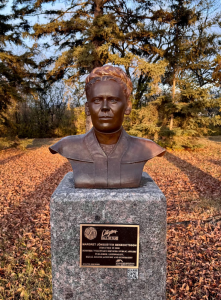Translating Culture
Alongside original Icelandic literature, Icelandic migrants in North America had an appetite for literature in translation. From the beginning, Icelandic newspapers and magazines in Manitoba featured poems, stories, and essays translated from other languages. By the late 1880s, the community began to produce and publish translated books.
The newspapers Heimskringla and Lögberg were two of the first venues for book-length Icelandic translations in Manitoba. In its first issue, Lögberg launched the “Lögberg Library.” The library consisted of serialized translations printed over several issues that could be clipped out from the paper each week, collected over time, and bound together as a book.
The first book of the “Lögberg Library” was printed across the paper’s first 82 issues. When collected and bound together the pages produced a 491-page book containing three short stories and a novel. The stories were written by Charles Dickens, Mark Twain, and Wilke Collins. The novel was H. Rider Haggard’s King Solomon’s Mine. Beginning in March 1892, Heimskringla followed suit and began to print serialized translations in the same serialized format. Together they formed the “Heimskringla Story Collection.”
Over the course of the next 30 years, the Logberg Library and the Heimskringla Story Collection each produced around 40 volumes. This included books written by some authors who are still famous today, such as Arthur Conan Doyle, Alexandre Dumas, Anthony Hope, and Jules Verne. Others have fallen out of fashion, such as Sylvanus Cobb Jr., Charles Garvice, Fergus Hume, W.W. Jacobs, and Eugenie John.
Lögberg and Heimskringla were not the only publishers of books translated into Icelandic in Manitoba. The editor of the periodical Freyja, Margrét Benedictsson, also translated and published numerous books, including but not limited to books themed around women’s emancipation and equality. Lois Waisbrooker, Rosa Graul, Miriam Michelson, Bertha M. Clay, and Sylvanus Cobb Jr. are just a few of the authors whose work she translated.
Icelanders in Manitoba produced many other translated novels and other sorts of translated books. On top of providing engaging reading material, these books aided the larger mission of maintaining the Icelandic language in North America. However, the heavy focus on English and American authors was no accident. These works were particularly vital in helping Icelanders adapt to their new Anglophone cultural surroundings. In this respect, translated books were an effective tool for acculturation and assimilation.






